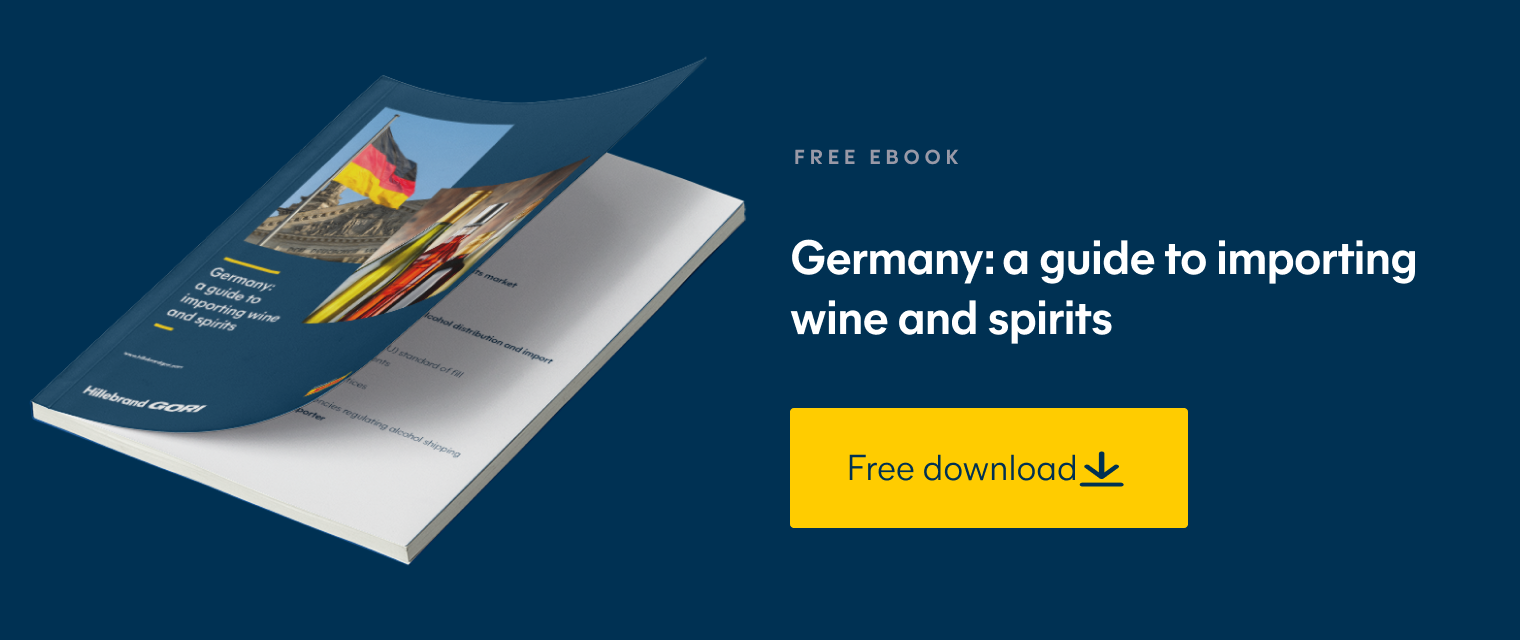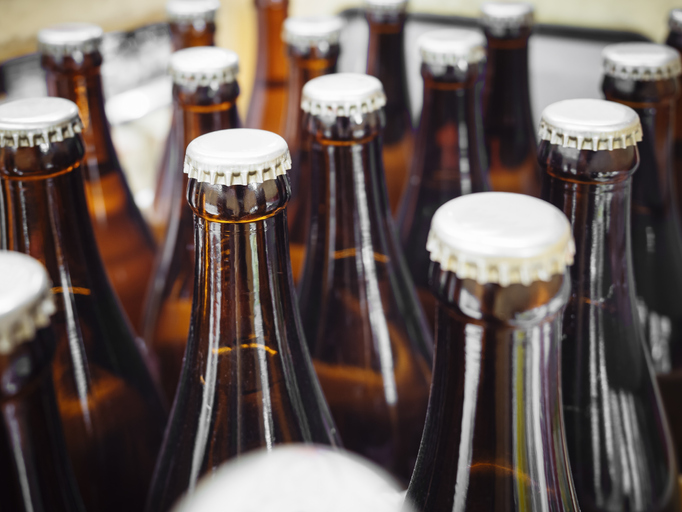Spirits logistics: A guide for importers of spirits
Spirits, wine, and beer differ in many ways, specifically in their alcohol content and the way they are produced. That's why spirits logistics requires special considerations, such as which types of containers can be used when transporting it in bulk. For importers, the most important factor in spirits logistics is handling regulations for dangerous (DG) liquids.
What defines a spirit?
Spirits, often referred to as distilled beverages, are alcoholic drinks produced through distillation. First, the sugars from grains, fruits, or vegetables are fermented using yeast and converted to alcohol. Then, the alcoholic liquid is vaporized and collected through a still. Alcohol vapors are cooled and condensed to obtain a higher alcohol degree. This process can be repeated several times to get more pure alcohol. After distillation, barrel ageing might take place before bottling. Common spirits include whiskey, vodka, rum, gin, and tequila.
Once the distillation process is complete, the alcohol by volume (ABV) is determined, a critical factor in spirits logistics. The ABV indicates the percentage of pure alcohol in the beverage, influencing not only its potency but also the regulations governing its transportation.
The terms spirits and liquor are often used interchangeably. Since spirits can be made with fruits and vegetables, they can have a sweet flavor without the need for sugar. A spirit with added sugar is called a liqueur. Some governments have specific standards for what constitutes a spirit, liquor, or a liqueur depending on the ABV, but for the purpose of spirits logistics, the transportation process is the same for all distilled alcoholic beverages.
How are spirits transported?
Depending on the destination, spirits importers may have several freight options to choose from, including multimodal journeys that involve more than one mode of transportation.
Road freight
All shipments involve some form of road freight. Trucks and vans account for more than half of all CO2 emissions from global trade transport, so it’s not the most environmentally-friendly option for long distances.
Sea Freight
Sea freight is cost efficient thanks to the large capacity of container ships. It may not always be the fastest method, but sea freight is a more sustainable transportation option .
Air freight
Air freight is typically the best choice for urgent spirits shipments. On the other hand, it’s more costly and produces more CO2 emissions than other methods.
Rail freight
Rail freight is ideal for mid-distance inland transportation. Trains don’t get stuck in traffic, and they're significantly better for the environment than road or air freight.
Spirits logistics involves a network of key players who facilitate the movement of these alcoholic beverages across borders. Among them, logistics providers like Hillebrand Gori play a pivotal role. These companies specialize in the transportation of bulk liquids, and their expertise ensures that spirits reach their destination intact and in compliance with regulations.
Safety and spirits logistic
Regulations governing the transport of alcohol, especially in bulk, are stringent. Importers need to be aware of and adhere to these regulations to avoid delays, fines, or damage to the products. The excise notice published by the UK government provides valuable information on spirits production within the UK, aiding importers in navigating the regulatory landscape.
Spirits are flammable due to their high ABV, so they are considered a dangerous (DG) liquid because of the fire hazard they can present during transport. For this reason, spirits cannot be transported in flexitanks, which are only suitable for carrying non-hazardous liquids. Spirits must be in bottles or ISO tanks for bulk transportation. ISO tanks are durable, reusable containers suitable for high-volume shipments of hazardous liquids.
The customs process for spirits logistics remains the same as other alcoholic beverages, but each country has its own specific regulations for transporting hazardous materials. These regulations dictate the proper classification, packaging, and labelling of spirits during transportation. Importers must be well-versed in the legal requirements to ensure smooth and lawful shipping.
Key things to consider when transporting spirits
Compared to beer and wine, distilled spirits are not as sensitive to changes in temperature and humidity as they travel through different climates. That said, high temperatures and exposure to direct sunlight increases oxidation, which can impact the flavor and overall characteristics of the beverage. Specialized transportation services equipped with insulation liners and temperature-controlled containers ensure that the spirits remain in optimal condition throughout the journey.
How Big is the Spirits Business?
According to Statista, worldwide revenues for the spirits industry exceeded $408 billion in 2023. Revenues have grown steadily every year since 2018 despite fluctuations in the economy, and global spirit sales are projected to be around $487 billion in 2028.
The top global spirit export leaders by volume include key players like the United States, South Korea, and Belgium. The international trade of spirits has seen significant growth in recent years, reflecting the global demand for diverse and premium alcoholic beverages. Importers play a pivotal role in connecting producers with consumers, contributing to the industry's robust growth.
Hillebrand Gori stands for spirits logistics
Hillebrand Gori connects distillers, bottlers, distributors, retailers and importers of wine, beer, and spirits. Our top priority is making alcoholic beverage transportation as easy as possible for everyone. We provide containers ready for intermodal shipping, so your spirits aren’t handled by anyone as the containers are moved from one mode of transportation to another.
In addition to distilled beverages, we transport everything that goes into their production, including grains, bottles, caps, and casks. We can deliver everything you need to craft spirits as well as transport them to their destination.
The myHillebrandgori app helps you stay up-to-date on your shipments. Use myHillebrandgori to:
- Track the location of your spirits throughout the entire journey.
- Keep in contact with everyone involved in the supply chain.
- Instantly check order details, SKUs, and product codes.
- Receive real-time updates via push notifications.
- Monitor the temperature during the journey.
- Measure CO2 emissions for each shipment.
- Manage your order to avoid delays and reduce transportation costs.
Leave spirits logistics to Hillebrand Gori
Spirits logistics demands meticulous planning, compliance with regulations, and collaboration with experienced carriers. From the production site to the consumer's glass, each step in the logistics chain requires careful consideration to ensure the seamless flow of spirits. Hillebrand Gori’s spirits logistics services handles all the details so importers can focus on what’s most important.
Published 19th January 2024
The strongest commercially available spirit is a Polish vodka called Polmos Spirytus Rektyfikowany. It's mostly used by home distillers to make their own flavored vodkas.
A cocktail is any mixed drink made with distilled liquor, so you can make cocktails from any spirit.
Baiju, sometimes called “Chinese vodka,” is the top selling spirit worldwide with a global market of $95 billion in 2023.
How can we help your business grow?
.png?sfvrsn=312da2e2_1)




